Abstract
Beginning with the swine flu litigation of the early 1980s, epidemiological evidence has played an increasingly prominent role in helping the nation's courts deal with alleged causal connections between plaintiffs' diseases or other harm and exposure to specific noxious agents (such as asbestos, toxic waste, radiation, and pharmaceuticals). Judicial reliance on epidemiology has high-lighted the contrast between the nature of scientific proof and of legal proof. Epidemiologists need to recognize and understand the growing involvement of their profession in complex tort litigation.
Full text
PDF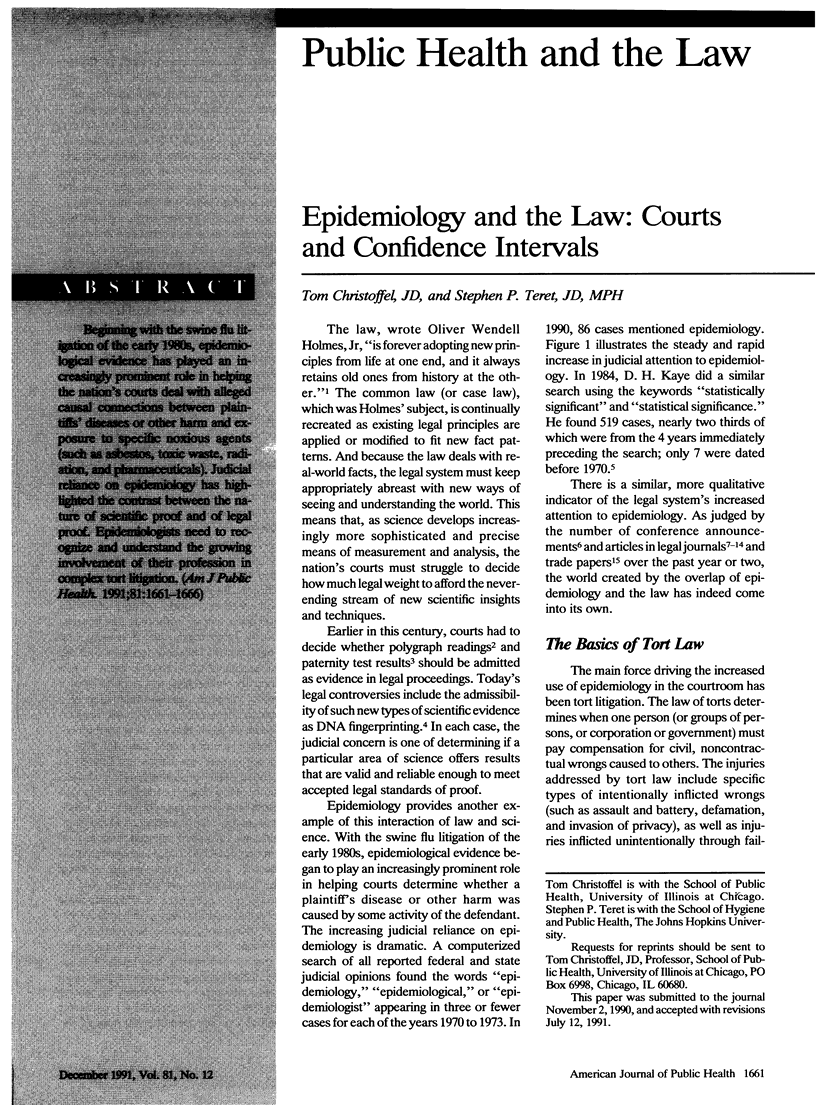
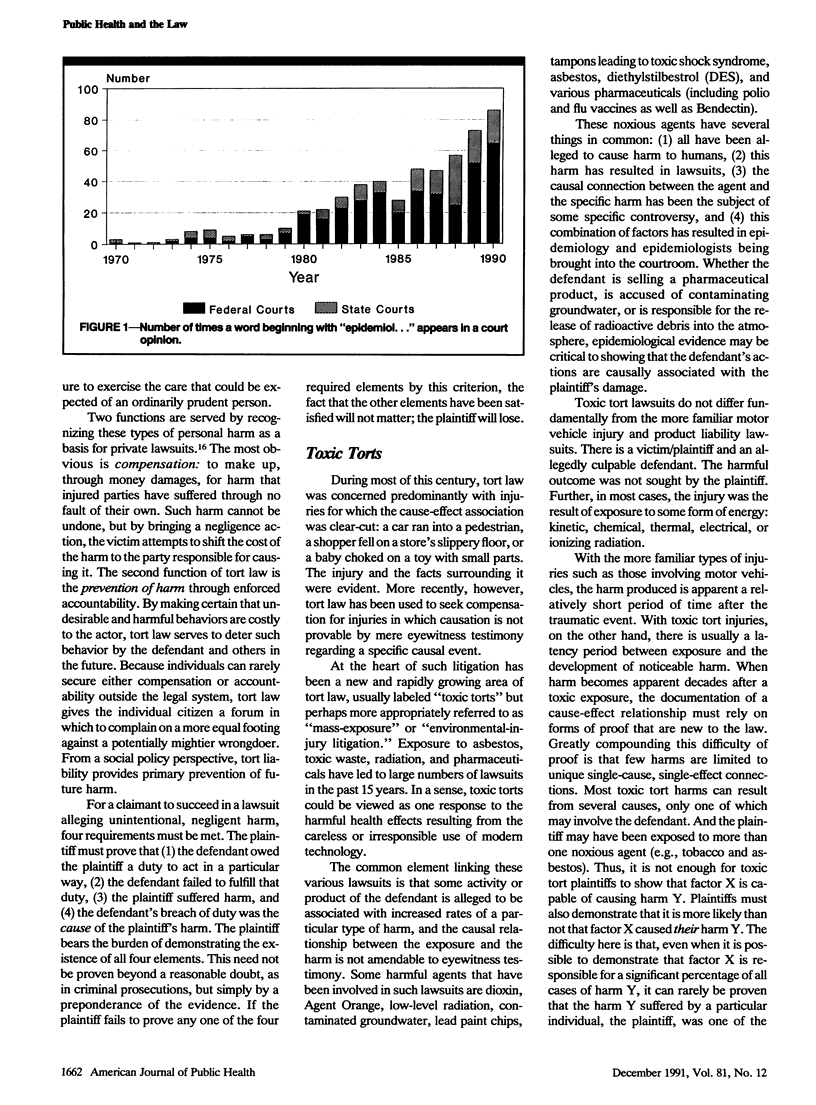
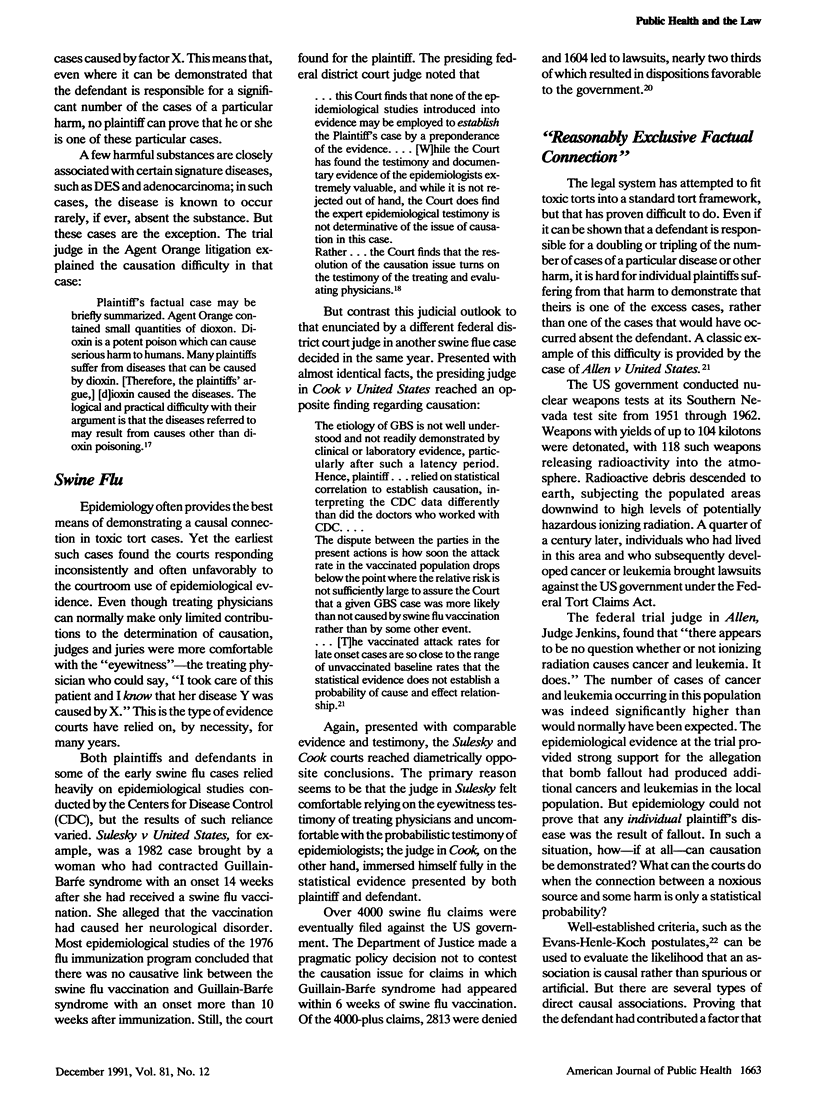
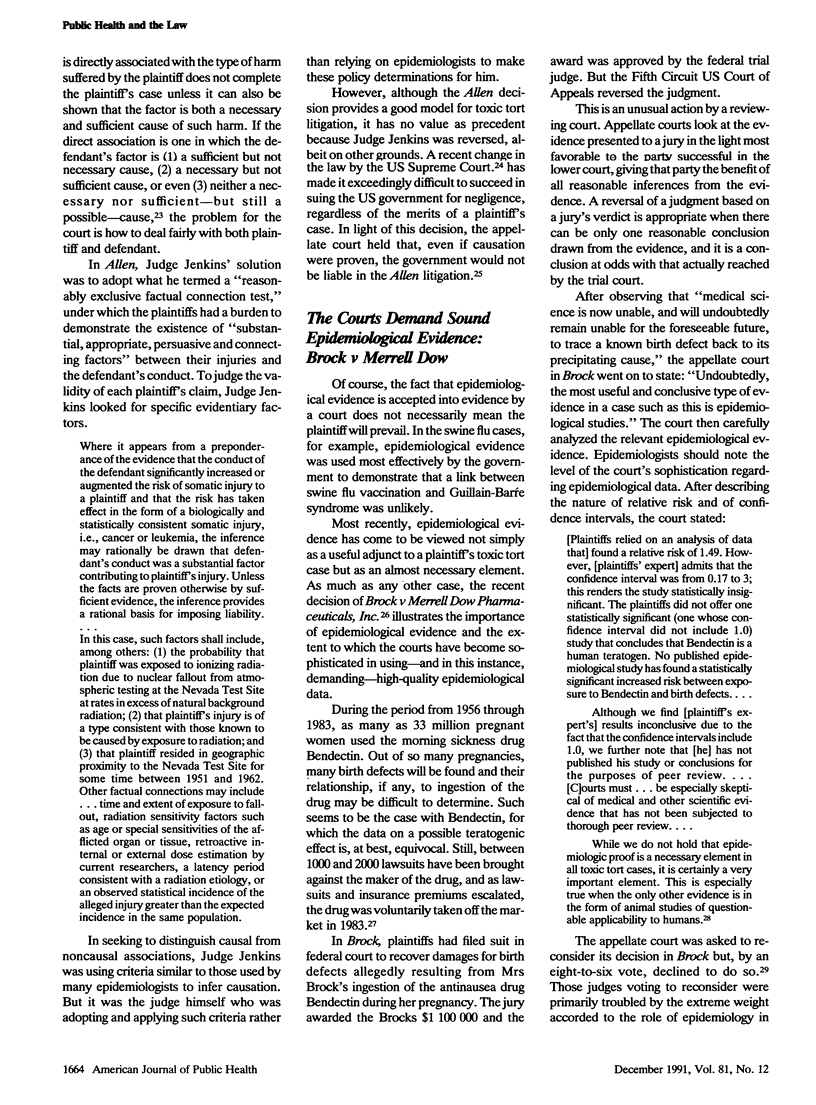
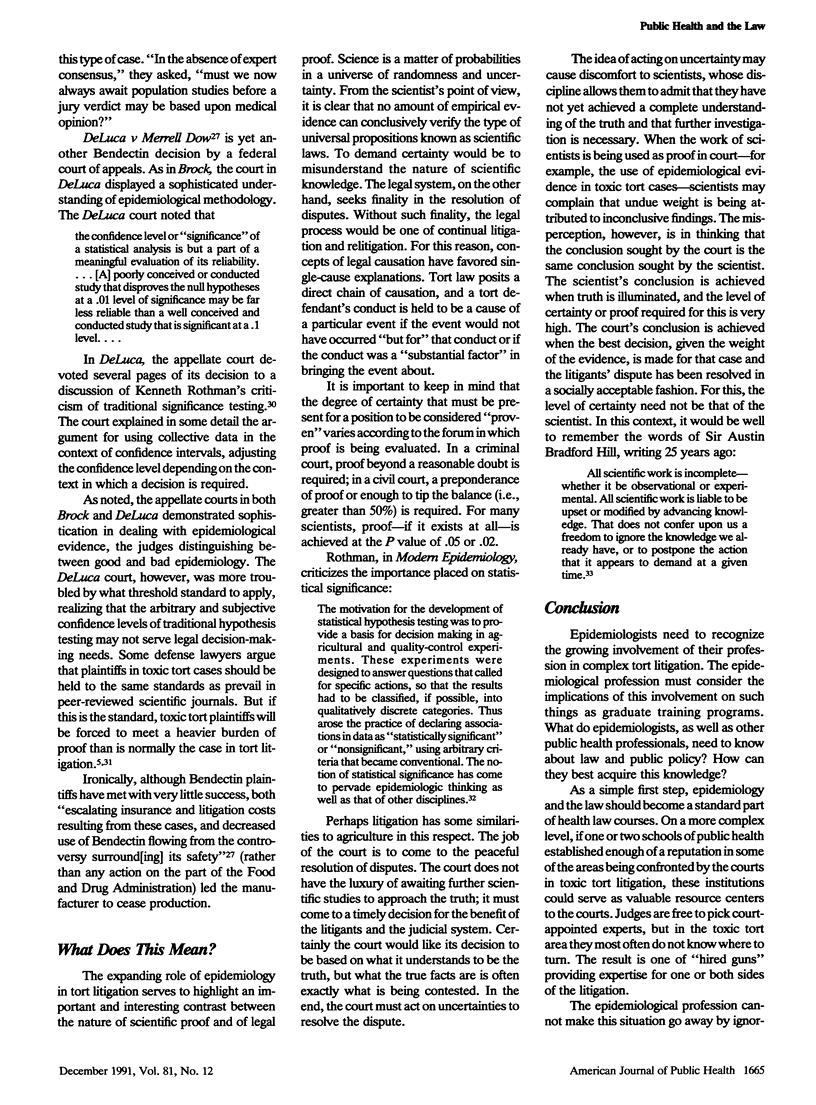
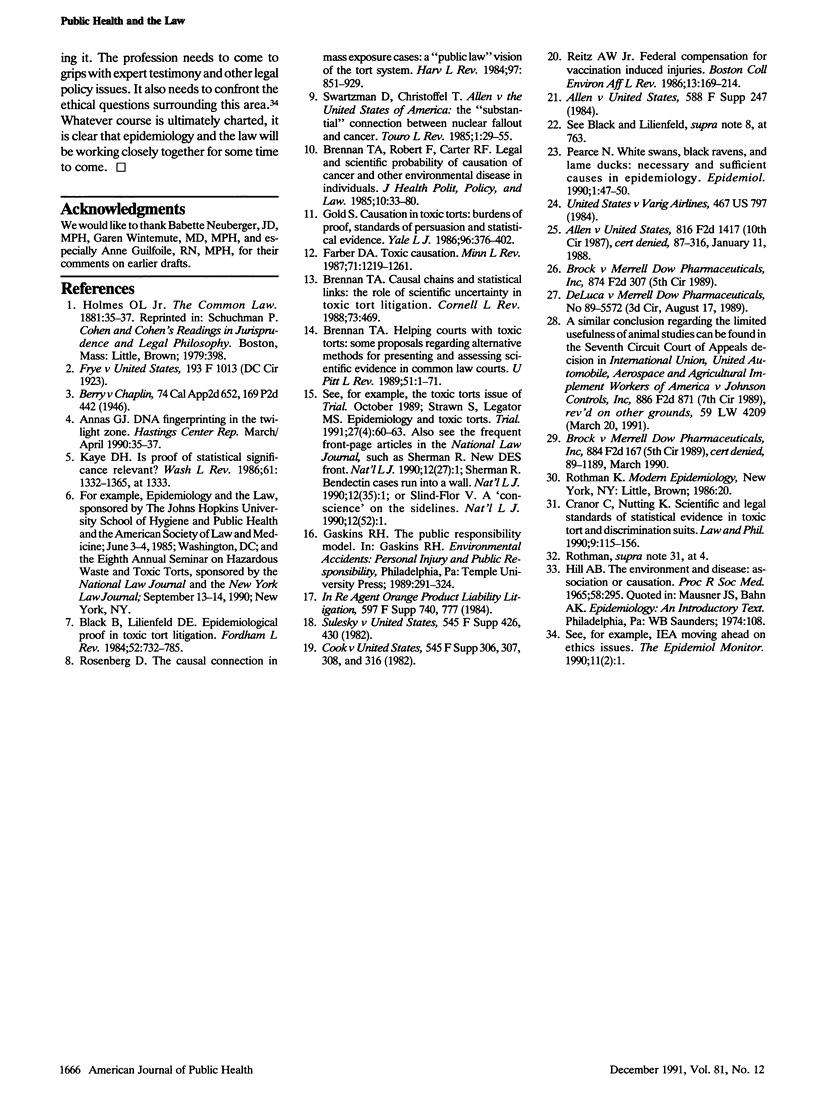
Selected References
These references are in PubMed. This may not be the complete list of references from this article.
- Annas G. J. DNA fingerprinting in the twilight zone. Hastings Cent Rep. 1990 Mar-Apr;20(2):35–37. [PubMed] [Google Scholar]
- Brennan T. A., Carter R. F. Legal and scientific probability of causation of cancer and other environmental disease in individuals. J Health Polit Policy Law. 1985 Spring;10(1):33–80. doi: 10.1215/03616878-10-1-33. [DOI] [PubMed] [Google Scholar]
- HILL A. B. THE ENVIRONMENT AND DISEASE: ASSOCIATION OR CAUSATION? Proc R Soc Med. 1965 May;58:295–300. [PMC free article] [PubMed] [Google Scholar]
- Pearce N. White swans, black ravens, and lame ducks: necessary and sufficient causes in epidemiology. Epidemiology. 1990 Jan;1(1):47–50. doi: 10.1097/00001648-199001000-00011. [DOI] [PubMed] [Google Scholar]


